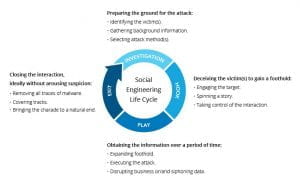Written by Patrick Hansen
Keeping an eye out for scams is a year-round job for anyone who uses the internet. But for scammers, the holiday season is the time to strike, while everyone is distracted by time off, gifts, and plans with family. From fake websites, gift cards, to even fake charities, it is important to stay on guard during the last part of the year.
Holiday Phishing
(If you need a refresher on phishing read this piece.)
Criminals love the amount of shopping and shipping that goes on during the last quarter of the year. They pretend to be Amazon, UPS, FedEx, Apple, and almost every other household brand name there is. A lot of phishing attacks come by email, declaring a problem with your order, shipping, payment, etc. In the past few years, SMS phishing has also shot up with intent just as malicious. Always remember, the real companies you interact with, won’t email or text you asking for personal information, and DON’T CLICK LINKS. If you are ever unsure about an email or text, look up the number for customer support and call.
Gift Cards
A gift card is a very sought after item for criminals because of the anonymous nature of purchases once it is gifted. Once it’s gone, it’s gone, and you won’t be able to get it back. Online, criminals will always try to get you to pay for a gift card and send them the information. Another thing to look out for is gift cards that have been tampered with. When buying a gift card from the store, make sure that the credit card number on the gift card is still covered. Criminals have ways to monitor when the card with that specific serial number is loaded with money so they can try to spend it before you can.
Fake This, Fake That
Online shopping can be extremely convenient, but there are things to watch out for. Some scammers will put up websites and buy domains that look very similar to real brand websites in appearance and URL. Always try to verify the website you are on in some way. If you are ever paying for something online, the “s” in “https” is a must. Sadly criminals will also set up fake charities designed to pull at your heartstrings. A quick Google search of the charity should provide enough information and others to verify it is real.
The holiday season is prime time for cyber thieves to attempt scams and steal your money and information. Always remember to double-check the random Amazon email, the random UPS text, gift cards, and everything else that is common for this time of year. Never give out your information and if there is any doubt, just contact the company itself. It is important to be aware of these attacks and be on guard year-round, but especially around the holidays, so you can enjoy them with cheer.






